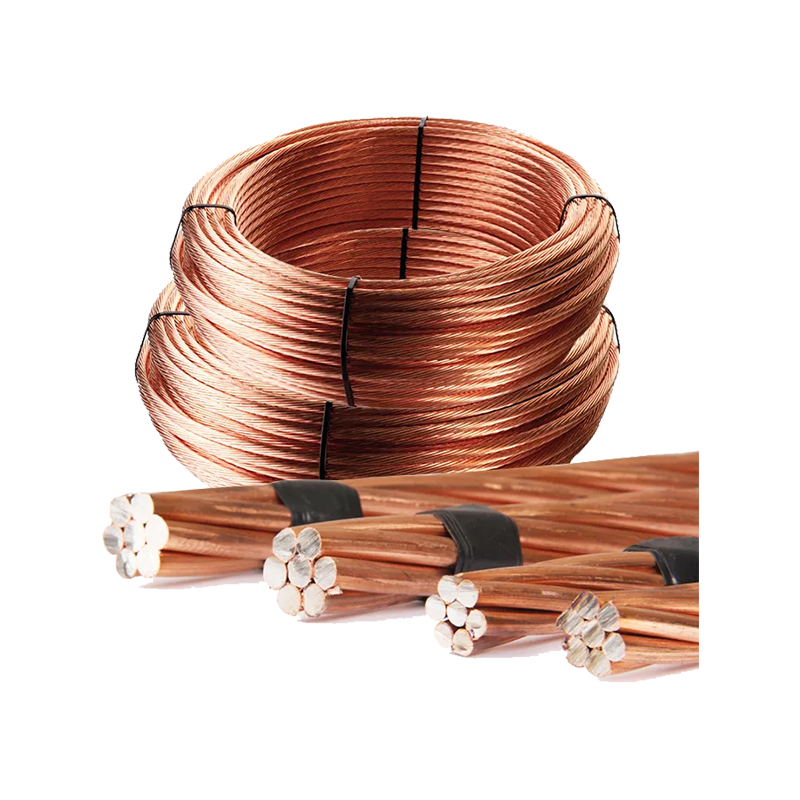Basic requirements for the continuity of earthing conductors
The continuity of earthing conductors refers to the uninterrupted conductive path they maintain throughout the grounding system. Ensuring the continuity of earthing conductors is an important prerequisite for the grounding system to effectively conduct fault currents and maintain electrical safety. Any poor connection, breakage or corrosion may cause the conductor to be interrupted, increase the grounding resistance, and thus affect equipment safety and personnel protection.
During the design and installation process, earthing conductors need to adopt reliable connection methods, use standard materials and accessories, avoid the impact of mechanical damage and corrosion on continuity, and ensure that the electrical connection of the entire system is stable and reliable.
The impact of earthing conductor material selection on continuity
The choice of materials directly affects the conductivity and durability of earthing conductors. Common materials include copper, galvanized steel and aluminum. Copper has good conductivity and strong corrosion resistance, and is suitable for long-term use, but the cost is relatively high. Galvanized steel is cheaper, but it is prone to rust in certain environments, affecting the continuity of conductivity. Aluminum is lighter, but has higher requirements for mechanical strength and joint processing. Selecting materials suitable for the use environment helps maintain the continuity of the earthing conductor. In addition, the material itself should have a certain mechanical strength to avoid breakage due to external force damage.

Importance of connection method and joint treatment
The connection method of earthing conductor is the key link to ensure continuity. Common connection methods include welding, mechanical crimping and bolting. Welding connection can provide lower contact resistance, but the construction requirements are high; mechanical crimping is easy to operate, but it is necessary to ensure that the crimping tool and the quality of the joint meet the specifications; bolt connection is easy to disassemble and suitable for maintenance and inspection, but it needs to be tightened regularly.
All connection parts should use special grounding joints to ensure tight connection and anti-corrosion treatment to avoid loose joints and oxidation leading to increased resistance. Good connection not only ensures conductor continuity, but also helps to maintain low impedance.
Anti-corrosion measures to ensure continuity and low impedance
Environmental factors such as humidity, soil pH and chemical corrosion have a great impact on the continuity of earthing conductors. Corrosion causes the cross-sectional area of the conductor to decrease or break, which directly affects the impedance of the grounding system. Taking anti-corrosion measures, such as selecting corrosion-resistant materials (such as copper or tinned copper), using anti-corrosion coatings, and using waterproof joints, can effectively extend the life of the conductor and maintain good conductivity. In addition, direct contact with highly corrosive soil should be avoided during burial, and appropriate protective pipes should be used.
Design a reasonable grounding system structure to reduce impedance
When designing the grounding system, the conductor path should be arranged reasonably to avoid unnecessary bends and connection points, shorten the conductor length as much as possible, and reduce contact resistance and inductance. The use of multi-point grounding and mesh structure helps to disperse fault current and reduce overall impedance. According to the specific engineering environment, the conductor cross-sectional area should be reasonably selected to ensure uniform current distribution and reduce local hot spots.
Construction specifications and testing guarantee system performance
Construction should be carried out in strict accordance with relevant standards and specifications to ensure the laying depth, fixing method and connection quality of the earthing conductor. During the construction process, the conductor should be avoided from mechanical stress such as stretching and twisting to reduce hidden dangers.
After the construction is completed, the system is verified to meet the design requirements by measuring the grounding resistance and conductor continuity test. Regular maintenance and testing can detect and repair damage in time to ensure the continuous and effective operation of the system.
Maintenance and management ensure long-term stable operation
The maintenance of the grounding system should include regular inspection of the physical state of the conductor and the joint, timely cleaning of rust and contaminants, and replenishment or replacement of the protective layer. Reasonable maintenance plan and operation monitoring equipment can warn of potential grounding faults. Scientific management helps to extend the life of the system and ensure electrical safety.
Comparison table of typical ground conductor continuity and low impedance influencing factors
| Influencing Factor | Specific Manifestation | Impact on Continuity | Impact on Impedance | Countermeasures |
|---|---|---|---|---|
| Material Selection | Differences in copper, galvanized steel, aluminum, etc. | Affects mechanical strength and corrosion resistance | Affects electrical conductivity | Select materials suitable for the environment |
| Connection Method | Welding, mechanical crimping, bolted connections | Loose or broken connections | Increases contact resistance | Use standard connection methods with corrosion protection |
| Corrosion Factors | Soil moisture, pH, chemical corrosion | Conductor breakage or cross-section thinning | Increases impedance | Use anti-corrosion coatings, protective conduits, and proper material choice |
| System Design | Conductor layout, length, cross-sectional area | Affects current distribution | Affects overall system impedance | Optimize design to reduce bends and connection points |
| Construction Quality | Burial depth, fixation method, avoiding mechanical stress | Mechanical damage causing breaks | Poor connection quality increases impedance | Follow strict construction standards and procedures |
| Maintenance & Management | Regular inspection, rust removal, protective measures | Extends service life | Maintains low impedance | Implement maintenance plans and monitor system status |

 English
English 简体中文
简体中文











